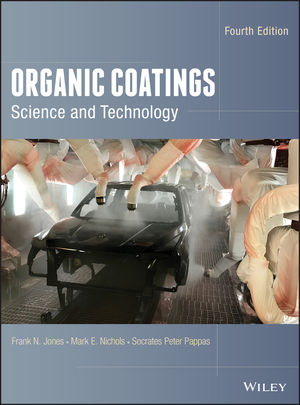How to Achieve Durable and Long-Lasting Coatings for Warehousing Facilities

Image courtesy of jatupronv, iStock, via Getty Images.
Warehouse operational teams work long shifts, sometimes around the clock. Every aspect of the facility needs to be durable, especially protective coatings on floors. Learn everything you need to know about achieving long-lasting concrete coatings for any warehouse facility to save money and improve efficiency.
Understand the Most Common Durability Influences
Numerous influences affect concrete coatings' long-term protection. These are the most common factors that may degrade warehouse floor coatings throughout professional industries.
Environmental Factors Degrade Coatings
A warehouse environment impacts its coatings in numerous ways, including size, design, and purpose.
Facilities with numerous windows increase the sun exposure on the concrete coating. These coating products contain common ingredients like epoxy resin, which degrades under ultraviolet (UV) light from direct sunshine.1
Humidity can also wear coatings down. Continuous water sitting on concrete changes pH levels, making the coating lose its grip on the material.2 In warehousing facilities dealing with continuous water spillage, the coating may begin to crack, flake, or peel.
Chemicals also affect the longevity of warehouse floor coatings. When exposed to chlorides, water-soluble and epoxy coatings deteriorate much faster on concrete surfaces.3 Harsher chemicals will also eat away at the coatings, resulting in the need for new applications.
Coating Selections Could Be Incorrect
Warehouse teams must select suitable coating materials for each application area’s requirements or activities. A facility section with constant foot traffic demands a coating that holds up well under rubber, non-slip soles. Similarly, forklifts require a chemical composition tough enough to withstand tires.
Other factors will affect its life span if the coating is applied to floors underneath specific machines. Machines that heat to high temperatures could degrade the coating chemicals if they cannot withstand them. The same concept applies to machines that consistently reach extremely low temperatures or fluctuate between the two. Understanding such factors is crucial to choosing the right coating product.
Flooring Might Not Be Ready for Coating
Surface preparation is vital to applying concrete coatings correctly. Concrete coatings will not adhere sufficiently if cured over a dirty floor, and concrete that is too smooth will not provide enough grip for many warehouse facility coating products.
However, it’s crucial to note that some floors can’t undergo buffing. For specialized purposes — such as preventing electrostatic discharges—flooring must allow static charges to flow across the floor instead of the building.4 Scratching or buffing the floors before applying sealant could ruin the floor’s functionality. Consider each floor’s materials and purpose before proceeding with coating preparation.
Learn How to Apply Warehouse Floor Coatings
Understanding how to apply concrete coatings correctly ensures they last as long as possible. Follow these steps to seal floors with coatings that withstand daily operations.
Consider the Coating’s Purposes
When a warehouse facility team member or leader starts browsing potential coating products, they quickly notice how these coatings serve many purposes. It’s important to decide what purpose a coating will serve depending on where it eventually goes in the facility.
For various reasons, warehouse floor coatings may use specific ingredients to reduce microbe growth. If left to eat away at concrete, microbial colonies erode concrete structures over time.5 They also pose significant operational risks for facilities handling food, hospital supplies or other products requiring a sterile environment.
Some coatings come in distinct colors, which facility teams use to add patterns or a fresh design to workspaces. The colors also cover past flooring damage, like embedded tire tracks in the concrete.
Concrete may last up to 100 years, but coatings will deteriorate much faster if applied in the wrong settings.6 Polyurethane coatings hold up when in frequent contact with chemicals than others that can’t withstand acidic chemicals.7 Noting which factors occur around new concrete coating helps professionals find the best coating for their warehouse.
Check the Application Directions
After choosing the best coating for a warehouse flooring section, users should always check the product's labeling for application instructions. The directions might advise only applying the coating while the floor is between specific temperatures, which would help the product adhere more efficiently and for longer.
Durability also improves when the product cures according to the instructions. Once the coating can withstand the friction, the facility can start operating vehicles or walking over the areas. It will last much longer, saving money by preventing reapplications.
Get the Flooring Ready
Concrete coating products need specific environments to work and endure daily use. For example, smooth concrete floors with older coatings or paint won’t provide the microscopically rough surface coating products need to adhere tightly. Therefore, buffing the floor with rented machinery may be necessary to remove older products and create adequate conditions.
An industrial flooring expert can provide additional information by examining the intended application area. Given the daily work around it, they'll know when buffing is necessary and how much coating an area needs.
Team members should understand how thick the coating must be for long-term use. If the application goes on too thick or thin, the dried layer may chip more easily under factors like tires or temperature fluctuations.
Prepare for Quality Control Efforts During the Application
Quality control checks are essential during the coating application process. Teams will save money on future reapplications by cautiously proceeding until the coatings finish curing. Patience leads to greater efficiency and prevents a second or third attempt at applying more products in the same area.
Team members can follow predetermined instructions according to the coating’s application directions. After someone cleans the area, another person should inspect it for dirt or debris. Another person should check the floor’s temperature and ensure enough supplies are available for preparatory steps like buffing with bristle brushes.
Plan the Long-Term Maintenance
Commercial warehouse floor coatings need some long-term maintenance to retain their durability. Weekly cleaning is essential. Mopping and sweeping removes liquid spills and debris that could otherwise stain the floors. The cause of the stain could erode the coating if it came from chemical spills or harsh dyes.
Surfaces with specific coating types may need a particular cleaning product. PH-neutral products ensure the specialized coating doesn't degrade, especially if someone cleans with a stiff bristle brush and an acidic cleaning solution.
Even the most durable coatings need help maintaining their adhesion and long-term quality. Teams can prevent cracks and stains with simple tools like rubber floor mats. Place them in high-foot-traffic areas wherever people stand while working. Multiple rectangular mats take the brunt of shoe scuffing.
Mats are most beneficial in places with high amounts of unavoidable sun exposure. If loading dock doors are open throughout the workday, the flooring inside them endure the impacts. Placing mats in those areas will reduce UV damage and protect the coatings below windows or skylights.
Repairs are another challenge when maintaining concrete coating. Even the best coating products won’t last forever. Eventually, cracks will form, and chips will break away. Applying new coating in those areas is vital, as it prevents the cracks and chips from spreading throughout the floor. Fill them with concrete sealant before applying any coating to ensure a smooth finish that looks identical to the rest of the floor.
Team members should visually inspect the floors daily as they move around the warehouse. They’ll quickly catch any necessary repairs before the floor undergoes serious damage.
In addition to chips or cracks, facility workers should watch for fading. If the coating’s gloss is fading in some spots, test it by feeling the area compared to one with more gloss. It could mean another application is necessary. When the new coating dries, place a rubber mat over it to make the application last longer than before. Fading also occurs due to foot traffic and vehicle tires.
Look Into Modern Coating Resources
Standard concrete floor coatings have numerous application resources. Warehouse teams should consider all options before proceeding with their project. A can of epoxy coating is all the product a team needs to cover a small area. After treating the floor with an optional bristle brush, notched rubber squeegees ensure the coating spreads to the proper thickness before curing.
Larger flooring areas could use a diamond grinding machine to remove older layers while opening microscopic holes for the new coating to grip. A professional industrial flooring company may have machinery for rent or equipment they can use to apply the coating themselves.
Apply Warehouse Floor Coatings with Ease
By learning more about concrete coatings before applications, warehouse teams can save time and money. Steps like reading application instructions, preparing the floor, investing in application tools and maintaining the coating long-term will make the protective coating last much longer.
For more information, visit Renovated.com.
References
1 Kamde D.; Pillai R. Effect of Sunlight/Ultraviolet Exposure on the Corrosion of Fusion-Bonded Epoxy (FBE) Coated Steel Rebars in Concrete. ResearchGate, 2020. https://www.researchgate.net/publication/342436184_Effect_of_SunlightUltraviolet_Exposure_on_the_Corrosion_of_Fusion-Bonded_Epoxy_FBE_Coated_Steel_Rebars_in_Concrete
2 Natkunarajah K.; Masilamani K.; Maheswaran S.; Lothenbach B.; Amarasinghe D.A.S.; Attygalle D. Analysis of the Trend of pH Changes of Concrete Pore Solution During the Hydration by Various Analytical Methods. ScienceDirect, 2022. https://www.sciencedirect.com/science/article/abs/pii/S0008884622000710
3 Millán Ramírez G.P.; Byliński H.; Niedostatkiewicz M. Effectiveness of various types of coating materials applied in reinforced concrete exposed to freeze–thaw cycles and chlorides. Scientific Reports, 2023. https://www.nature.com/articles/s41598-023-40203-8
4 Grant, J. Understanding ESD Floors: Does Your Facility Need Them? Dur-A-Flex. https://www.dur-a-flex.com/blogpost/what-are-esd-floors-and-does-your-facility-need-them/
5 Wang D.; Guan F.; Feng C.; Mathivanan K.; Zhang R.; Sand W. Review on Microbially Influenced Concrete Corrosion. Microorganisms, 2023. https://www.mdpi.com/2076-2607/11/8/2076
6 Morrison R. The Pros and Cons of Concrete Houses (Updated for 2023). Renovated, 2023. https://renovated.com/the-pros-and-cons-of-concrete-houses/
7 Kaur R.; Singh P.; Tanwar S.; Varshney G.; Yadav S. Assessment of Bio-Based Polyurethanes: Perspective on Applications and Bio-Degradation. Macromol, 2022. https://www.mdpi.com/2673-6209/2/3/19
Looking for a reprint of this article?
From high-res PDFs to custom plaques, order your copy today!








